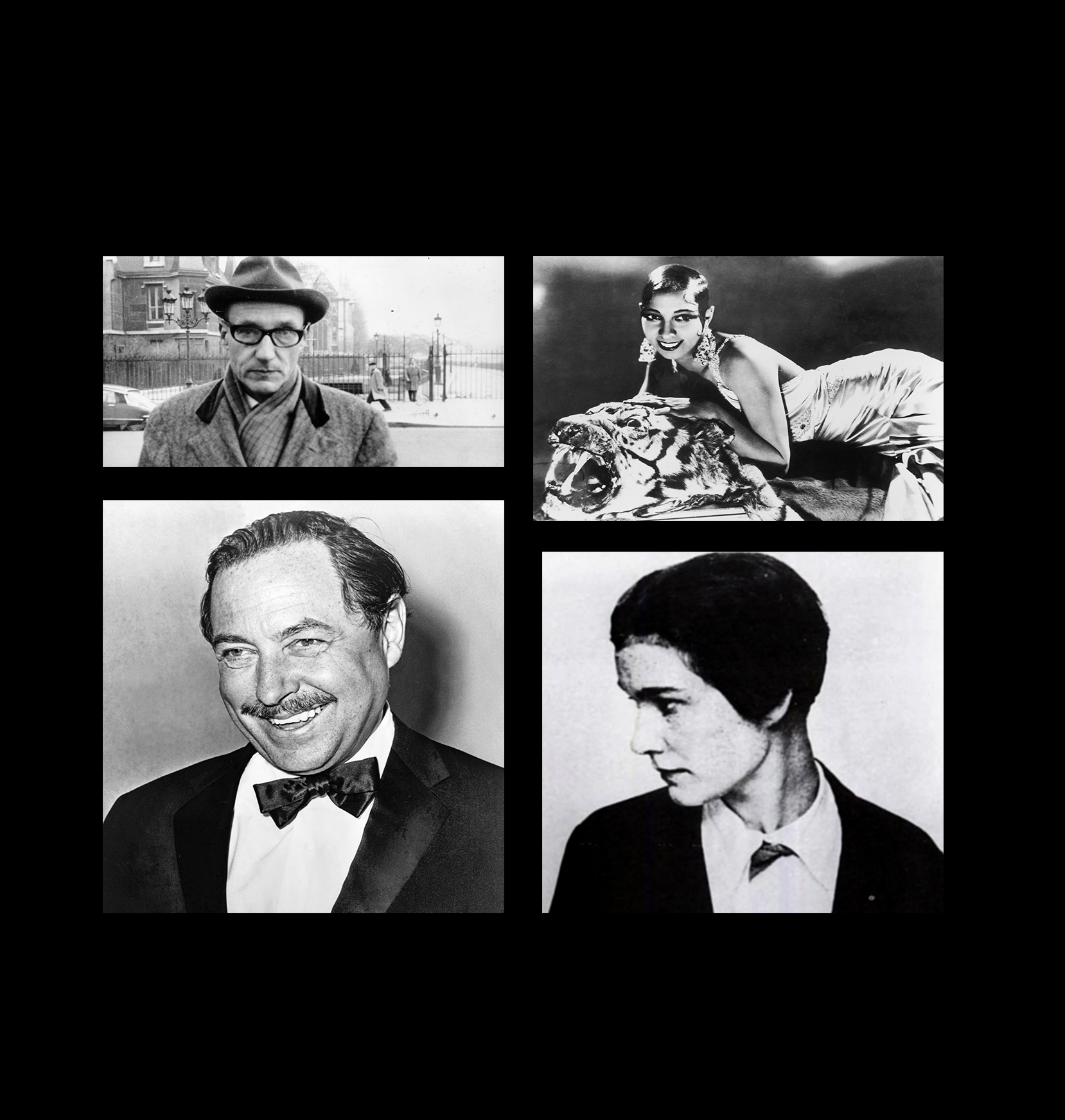PIONEERS


Josephine Baker was bisexual.[48] Her first marriage was to American Pullman porter Willie Wells when she was only 13 years old. The marriage was reportedly very unhappy and the couple divorced a short time later. Another short-lived marriage followed to Willie Baker in 1921; she retained Baker's last name because her career began taking off during that time, and it was the name by which she became best known. While she had four marriages to men, Jean-Claude Baker writes that Josephine also had several relationships with women.[48] During her time in the Harlem Renaissance arts community, one of her relationships was with Blues singer Clara Smith.[48] In 1925 she began an extramarital relationship with the Belgian novelist Georges Simenon.[49] In 1937, Baker married Frenchman Jean Lion. She and Lion separated in 1940. Lion died in 1957 of Spanish influenza.[citation needed] She married French composer and conductor Jo Bouillon in 1947, and their union also ended in divorce but lasted 14 years. She was later involved for a time with the artist Robert Brady, but they never married.
As a boy, Burroughs lived on Pershing Ave. in St. Louis' Central West End. He attended John Burroughs School in St. Louis where his first published essay, "Personal Magnetism" – which revolved around telepathic mind-control – was printed in the John Burroughs Review in 1929.[12] He then attended the Los Alamos Ranch School in New Mexico, which was stressful for him. The school was a boarding school for the wealthy, "where the spindly sons of the rich could be transformed into manly specimens".[13] Burroughs kept journals documenting an erotic attachment to another boy. According to his own account, he destroyed these later, ashamed of their content.[14] He kept his sexual orientation concealed from his family well into adulthood, due to the context in which he grew up and from which he fled—that is, a "family where displays of affection were considered embarrassing".[15] He became a well-known homosexual writer after the publication of Naked Lunch in 1959. Some[who?] say that he was expelled from Los Alamos after taking chloral hydrate in Santa Fe with a fellow student. Yet, according to his own account, he left voluntarily: "During the Easter vacation of my second year I persuaded my family to let me stay in St. Louis."[14]
Thelma Ellen Wood (July 3, 1901 – December 10, 1970) was an American sculptor and silverpoint artist. Her lesbian relationship with Djuna Barnes was fictionalized in Barnes' novel Nightwood. Wood was born in Mankato, Kansas, the second of four children. Her father later moved the family to St. Louis, Missouri.[1] In 1918 her mother and younger brother succumbed to the influenza epidemic of 1918. Two months previous to their deaths, Wood enrolled at the St. Louis School of Fine Art at Washington University.[2] It is likely there that she learned the technique of silverpoint drawing, for which she is best known.[2] In 1920, Wood and a fellow art student, Myra Marglous, applied for passports and left for Paris to continue studying art.[2]
After some early attempts at relationships with women, by the late 1930s Williams began exploring his homosexuality. In New York City, he joined a gay social circle that included fellow writer and close friend Donald Windham (1920–2010) and his boyfriend Fred Melton. In the summer of 1940, Williams initiated a relationship with Kip Kiernan (1918–1944), a young Canadian dancer he met in Provincetown, Massachusetts. When Kiernan left him to marry a woman, Williams was distraught. Kiernan's death four years later at age 26 was another heavy blow. On a 1945 visit to Taos, New Mexico, Williams met Pancho Rodríguez y González, a hotel clerk of Mexican heritage. Rodríguez was, by all accounts, a loving and loyal companion. But he was also prone to jealous rages and excessive drinking, and their relationship was tempestuous. In February 1946 Rodríguez left New Mexico to join Williams in his New Orleans apartment. They lived and traveled together until late 1947, when Williams ended the relationship. Rodríguez and Williams remained friends, however, and were in contact as late as the 1970s.